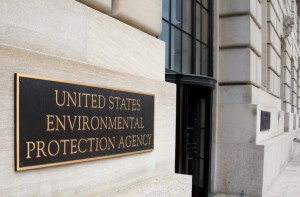Powering Down—EPA Issuing New Emission Rules
 By summer, the Environmental Protection Agency (EPA) plans roll out regulation 111-D, which focuses on significantly reducing power plant emissions by 2020. The rule-set must be completed and enshrined in law before President Obama leaves office in 22 months—for bureaucracy, that’s practically a sprint.
By summer, the Environmental Protection Agency (EPA) plans roll out regulation 111-D, which focuses on significantly reducing power plant emissions by 2020. The rule-set must be completed and enshrined in law before President Obama leaves office in 22 months—for bureaucracy, that’s practically a sprint.
The result is a new set of standards designed to lessen the environmental impact of power generation, especially at sites which rely heavily on fossil fuels. But let’s dig deeper: What does this really mean for power producers?
Credit Where Credit is Due?
As noted by a recent Washington Post article, the idea behind 111-D is to target high-impact fuels such as coal and compel power plants to replace them with options such as solar, wind, nuclear, or geothermal. These alternative energy sources come with virtually no carbon footprint so long as they are properly built, maintained and decommissioned as appropriate. To assist in meeting EPA targets, companies will be given “credits” based on the fuel source they choose.
The issue? That there’s no consensus on the credit value of “biomass,” which is a fancy way of saying that power plants should burn wood instead of coal. Some experts argue that if wood-burning gets too much credit, companies will pay big bucks to rip down forests—or as happened in Europe after similar legislation was passed, plant tree farms in other countries and then have the wood chopped, bundled and shipped back home for burning. Not exactly environmentally sound. With the right credit value, however, it’s possible for wood to become a viable alternative instead of the go-to replacement.
Other Options
Forward-thinking power gen companies may also want to consider new alternatives such as the nuclear waste reaction proposed in Australia or the tidal-stream arrays making a splash in Britain in Indonesia.
Consider tidal-stream technology: While installing underwater turbines comes with added cost and complications, they operate on a five-year maintenance cycle and have virtually no environmental impact since they do not alter tide patterns. In addition, the power generated is more reliable than other low-footprint options such as solar or wind.
Of course, not every company can afford a tidal-stream array or is in a position to tap geothermal energy. As a result, the first step to 111-D compliance may be to address existing coal-plant issues by ensuring that current power technology runs as smoothly and efficiently as possible. While it may be tempting to spend on new, higher credit options and let coal maintenance slide, regular power plant cleaning is much less costly and allows companies to make considered investment choices rather than trying to beat the clock on EPA regulations.
Next Steps:
- Subscribe to our blog to stay informed about the latest HVAC news and insight.
- Stay up to date on facility maintenance tools such as chiller tube cleaners, boiler tube cleaners, hose/pipe cleaners, descaler systems, industrial vacuums, commercial pressure washers, and drain cleaners.

